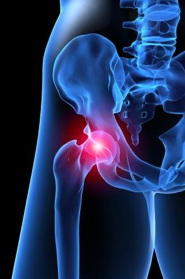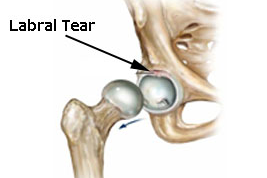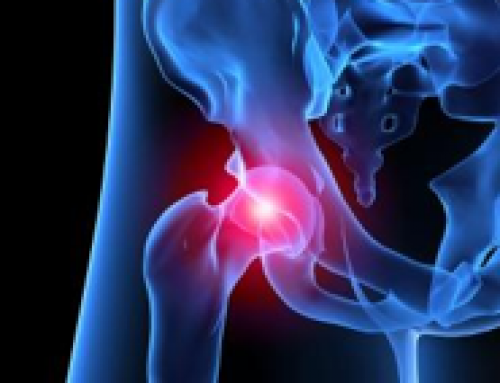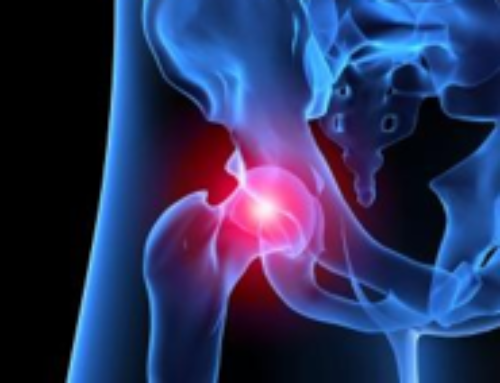The hip of the body is similar to the shoulder in that it is comprised of a ball and joint socket. The ball of this socket is the upper end of the femur that “sockets” into the acetabulum. Just the same as the other joints of the body, the hip socket is  encased with a cartilaginous structure – called the labrum – on the outside that serves both to help manage the ball within the socket and to act as a valve to retain the fluid within.
encased with a cartilaginous structure – called the labrum – on the outside that serves both to help manage the ball within the socket and to act as a valve to retain the fluid within.
It is not uncommon for a person to tear their acetabular labrum and not even realize it has happened due to the location and cartilaginous composition. Or it may be extremely painful and prohibit an athlete from competing.
What are these Labral Tears caused by?
Many acetabular labrum tears do not occur as the result of a single cause, and are instead often caused by general degeneration of the area. Around 75% of all labral tear cases have this cause, giving them the name of degenerative labral tears. This degeneration has a strong link to common osteoarthritis, which is a general weakening and roughening of hip joint as the bones are ground down.
It is more common for a tear to occur in those who have known hip abnormalities, such as impingement of the hip or hip dysplasia. Since these both cause the hip be abnormally shaped, it is much more likely for the hip bone to either directly snag at the labral structure, or to wear it down by pinching and rubbing it during a person’s  normal movements.
normal movements.
How do I know if my Acetabular Labrum has been torn?
There are a few major symptoms that it has occurred, primarily severe inflammation of the hip joint and pain. It is most common for the pain to occur in sharp bouts during movement, but it also possible for the pain to exist only as a dull ache in the groin area.
This will differ depending on where and how your labrum has been torn. In some cases there is an audible clicking inside the joint, which is commonly associated with a labral tear.
If you believe you have torn your labrum, diagnosis entails a workup with a Los Angeles orthopedic surgeon. While the tear will not show up directly on an x-ray, it is usually entirely visible on an MRI. It may be necessary to have an MRI with dye, known as an MRI arthrogram.
What treatment options are available?
The primary way this tear is treated is through hip surgery to remove the damaged parts of the tissue while seeking to repair the remaining healthy parts to have a functioning labrum. Also during the surgery the orthopedic doctor in Los Angeles will often work to soften any potentially jagged edges of the hip that could serve to cause damage again in the future.
Our clinic in particular chooses to take a less invasive approach, and offers those with labral tears the option to undergo a hip arthroscopy. This procedure goes a step further than the other surgeries in that in addition to the removal of damaged tissue, our surgeon will reshape the hip components for a better fit of the joint to prevent a tear from occurring again.
The Hip Arthroscopy
A hip arthroscopy is typically less invasive than other options due to the sports medicine doctor using a tiny camera  inserted into the hip to see what damage has occurred as opposed to fully opening the hip to examine it. The Beverly Hills orthopedic surgeon will then insert the required instruments into small incisions for a minimally invasive surgery.
inserted into the hip to see what damage has occurred as opposed to fully opening the hip to examine it. The Beverly Hills orthopedic surgeon will then insert the required instruments into small incisions for a minimally invasive surgery.
The repair may entail simply shaving down the damaged part of the labral tissue, or repairing the tear to provide stability and reduce pain. Having an experienced orthopedic surgeon such as at the Award Winning Beverly Hills Orthopedic Institute will put you in the best hands.





